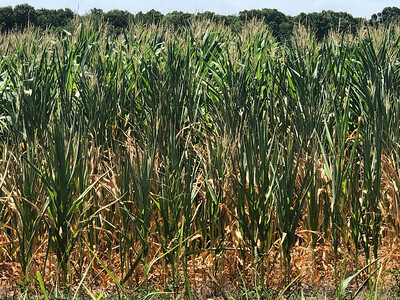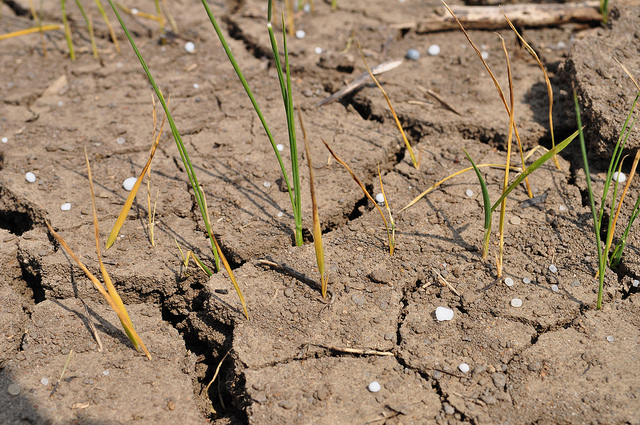Crop Drought Effects

Drought of 2022: Row Crop News
The drought conditions of 2022 brought additional hardship for Arkansas producers in an already difficult year. Our crop specialists work to provide recommendations and resources for farmers making difficult decisions during drought conditions. Find resources and press releases below for updates from our specialists.
Resources and Recommendations
2022 | Mitigating Irrigation Fatigue and Drought Stress
Press Releases
July 14, 2022 | Drought forcing Arkansas farmers to make hard choices between crops
July 14, 2022 | Robertson: Drought situation in cotton ‘could get real ugly before it is over’
Drought of 2012: Review
While drought conditions plagued crops across the U.S. in 2012, field crop production in Arkansas has much more extensive usage of irrigation than other production regions. The result is that crop production in Arkansas is capable of withstanding drought conditions that are much more destructive for crop production in other states.
Warmer than normal temperatures that enabled early planting, coupled with the prevalence
of supplemental water, has resulted in good plant development for Arkansas crops.
Information from field reports indicates that field crops have required 1-2 additional
irrigation applications due to drought conditions. Rice required 5-10 additional
acre-inches of water to maintain a desirable flood.
Within the University of Arkansas System Division of Agriculture, crop, irrigation
and ag economics specialists have been working to develop new tactics for helping
Arkansas' row crop growers cope with future droughts while conserving the declining
aquifers that have protected Arkansas agriculture for more than a century.
Publications and other resources
- Impact of the 2012 Drought on Field Crops and Cattle Production in Arkansas
A summary of how the 2012 drought affected row crops and cattle production in Arkansas.
- Southern Risk Management Education Center
Established in 2009, the center coordinates risk management education programs throughout the southern region primarily through a regional competitive grants program serving the states/territories of Alabama, Arkansas, Georgia, Florida, Kentucky, Louisiana, Mississippi, North Carolina, Oklahoma, South Carolina, Tennessee, Texas, Virginia, Puerto Rico and the Virgin Islands. The Center strives to build networks and relationship throughout the region with growers and industry stakeholders that are diverse and grassroots based. Our ultimate goal is to deliver results by educating producers.
Other Media
- Arkansas Row Crops - BLOG
- Scheduling irrigation using an atmometer -VIDEO
- Irrigation practices - VIDEO
- When to end soybean irrigation - VIDEO
- Irrigation efficiency in the Delta - VIDEO
